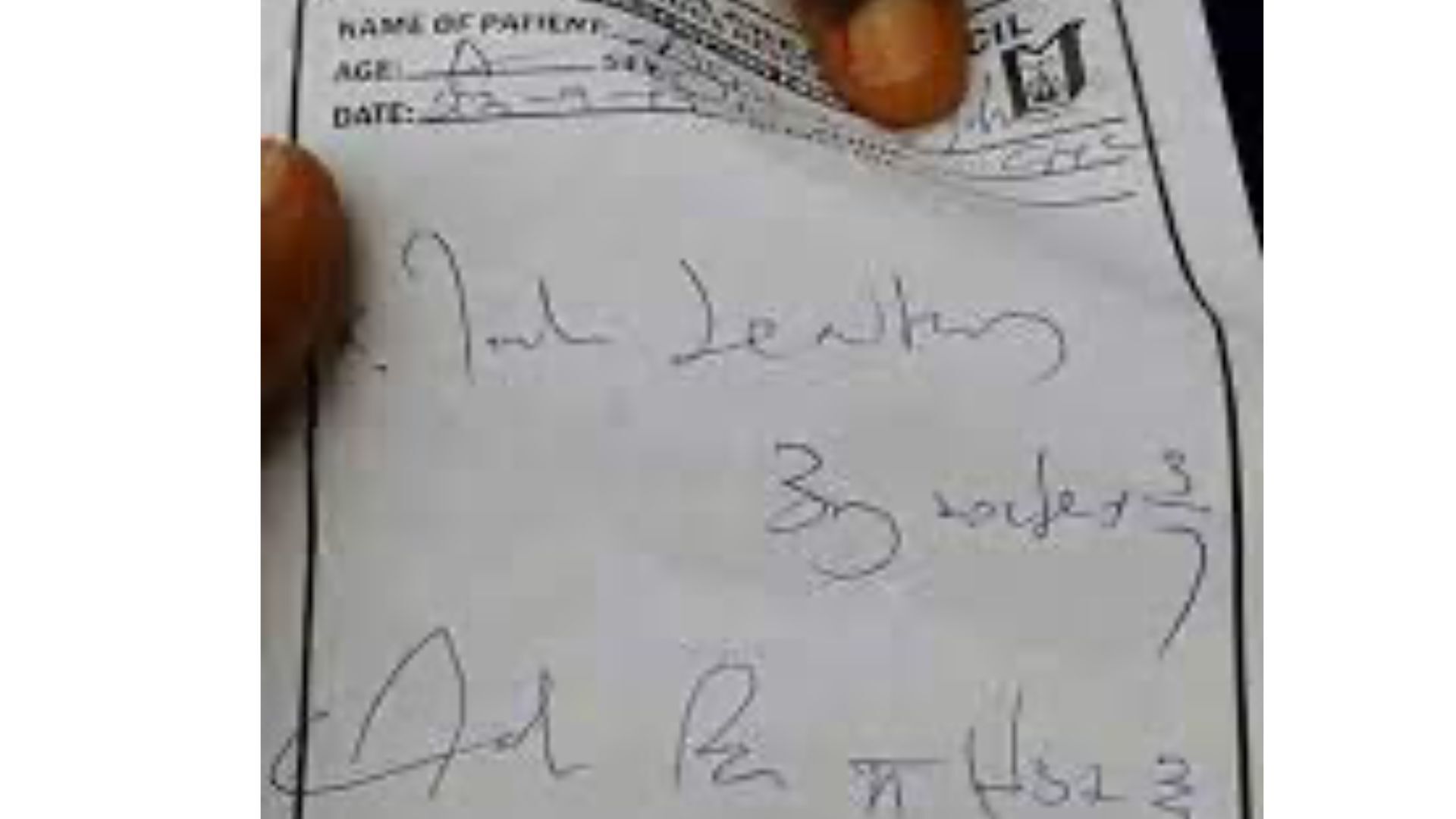Politics
Indian Court Mandates Clear Prescriptions to Save Lives

The Punjab and Haryana High Court has made a significant ruling, declaring that a “legible medical prescription is a fundamental right.” This landmark decision, issued by Justice Jasgurpreet Singh Puri, underscores the critical importance of clear handwriting in medical prescriptions, highlighting that illegible notes can pose serious health risks.
During a recent case concerning allegations of rape, cheating, and forgery, Justice Puri examined a medico-legal report that was completely unreadable. He stated, “It shook the conscience of this court as not even a word or a letter was legible.” The judge expressed dismay that “government doctors are still writing prescriptions by hand which cannot be read by anybody except perhaps some chemists,” as reported by the BBC.
In response to this issue, the court has directed the government to implement handwriting lessons in medical education and to introduce digitised prescriptions within two years. Until these changes take effect, all doctors are required to write prescriptions in clear, capital letters to mitigate the risk of errors.
Public Debate and Medical Consequences
This ruling has reignited a long-standing public debate regarding the notoriously poor handwriting of doctors, a topic often joked about in India and beyond. Yet, medical professionals assert that the implications of illegible prescriptions are serious. They can lead to misdiagnoses, incorrect medications, and even fatalities.
Dr. Dilip Bhanushali, president of the Indian Medical Association (IMA), representing over 330,000 doctors, commented on the situation. He noted that while urban doctors increasingly use digital prescriptions, the challenge remains prevalent in rural and small-town clinics. “It’s true that many doctors have poor handwriting, but overcrowded hospitals and heavy workloads make it difficult to write neatly,” he explained. The IMA has advised its members to adhere to the court’s directions and write in bold, legible letters.
This is not the first time Indian courts have addressed the issue of illegible handwriting in the healthcare sector. The Odisha High Court and the Allahabad High Court have previously criticized “zigzag” or “shabby” prescriptions that were indecipherable.
Global Context and Local Implications
The dangers associated with unreadable prescriptions are well-documented around the world. A report from the 1999 Institute of Medicine (IoM) estimated that medical errors lead to at least 44,000 preventable deaths annually in the United States, with 7,000 of those linked to poor handwriting alone. In the United Kingdom, health authorities have acknowledged that drug errors result in “appalling levels of harm” and that electronic prescribing could reduce mistakes by half.
In India, however, official data on the consequences of illegible prescriptions remains scarce. Numerous incidents illustrate the risks, including a tragic case in Noida in 2014, where a three-year-old child died after receiving an incorrect injection. In light of such events, pharmacist Chilukuri Paramathama from Telangana filed a public interest petition advocating for a ban on handwritten prescriptions. His efforts contributed to the Medical Council of India’s directive in 2016, mandating that all doctors write generic drug names “legibly and preferably in capital letters.”
Despite these measures, pharmacists continue to encounter unreadable prescriptions. Ravindra Khandelwal, CEO of Dhanwantary Pharmacy in Kolkata, remarked, “We sometimes have to call doctors for clarification because it’s critical that we dispense the right medicine.”
As the court moves towards digitisation and clarity in medical prescriptions, this ruling serves as a vital reminder of the potential consequences of illegible handwriting. In an age where technology is readily available, the importance of clear communication in healthcare remains paramount. The decision reflects a growing recognition that a few unclear words can indeed have life-or-death implications, and it highlights the need for ongoing reform in the medical field.
-

 World1 week ago
World1 week agoPrivate Funeral Held for Dean Field and His Three Children
-

 Top Stories2 weeks ago
Top Stories2 weeks agoFuneral Planned for Field Siblings After Tragic House Fire
-

 Sports3 months ago
Sports3 months agoNetball New Zealand Stands Down Dame Noeline Taurua for Series
-

 Entertainment3 months ago
Entertainment3 months agoTributes Pour In for Lachlan Rofe, Reality Star, Dead at 47
-

 Entertainment2 months ago
Entertainment2 months agoNew ‘Maverick’ Chaser Joins Beat the Chasers Season Finale
-

 Sports3 months ago
Sports3 months agoSilver Ferns Legend Laura Langman Criticizes Team’s Attitude
-

 Sports1 month ago
Sports1 month agoEli Katoa Rushed to Hospital After Sideline Incident During Match
-

 World2 weeks ago
World2 weeks agoInvestigation Underway in Tragic Sanson House Fire Involving Family
-

 Politics2 months ago
Politics2 months agoNetball NZ Calls for Respect Amid Dame Taurua’s Standoff
-

 Top Stories2 weeks ago
Top Stories2 weeks agoShock and Grief Follow Tragic Family Deaths in New Zealand
-

 Entertainment3 months ago
Entertainment3 months agoKhloe Kardashian Embraces Innovative Stem Cell Therapy in Mexico
-

 World4 months ago
World4 months agoPolice Arrest Multiple Individuals During Funeral for Zain Taikato-Fox





















